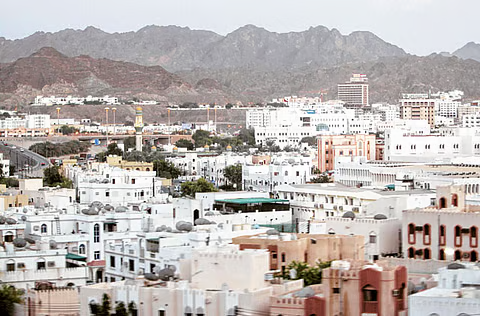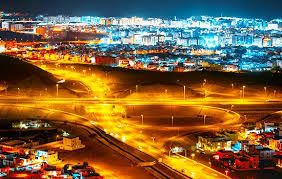Oman cost of living index has positioned the nation as the Gulf’s most affordable country, setting it apart from its regional neighbors. In a time when living costs across the Middle East are rising, Oman has emerged as a unique example of balance between modern development and affordability. From daily essentials to housing, healthcare, and leisure, Oman offers residents and expatriates a sustainable lifestyle without the overwhelming financial burden common in other Gulf states.
This recognition has sparked interest among professionals, families, and investors, who now view Oman as not just a scenic travel destination but also a practical place to live, work, and build a future.
Understanding the Oman Cost of Living Index
The Oman cost of living index measures how expensive or affordable it is to live in the country compared to others in the Gulf. Factors include housing, transportation, healthcare, food prices, and lifestyle services. Unlike its neighbors, Oman balances affordability with a high standard of living.
Key factors making Oman stand out:
- Affordable Housing: Property rents and purchase costs remain significantly lower compared to Dubai, Doha, or Riyadh.
- Lower Transport Costs: Fuel prices and public transport expenses are relatively budget-friendly.
- Reasonable Education and Healthcare Fees: Both sectors are accessible without extreme costs.
- Everyday Essentials: Groceries, dining out, and utilities are competitively priced, supporting family budgets.
Why Oman Tops the Gulf in Affordability
Oman cost of living index is a reflection of smart government policies, stable infrastructure costs, and a focus on sustainable growth. The country avoids over-commercialization, which has helped keep prices grounded.
- Balanced Urban Development: Unlike cities heavily driven by luxury real estate, Muscat and other Omani cities focus on functional and moderately priced housing.
- Local Economy Integration: Oman supports local industries, reducing dependency on costly imports.
- Energy Subsidies: Fuel remains affordable, reducing transport and logistics expenses.
- Steady Population Growth: Unlike Gulf states with large inflows of expatriates driving housing demand, Oman’s population growth is stable, keeping rents in check.
Cost of Living in Oman vs. Other Gulf Countries
When comparing the Oman cost of living index to its Gulf peers, the difference becomes striking.
- Housing: In Oman, monthly rent for a two-bedroom apartment can be 30–50% lower than in Dubai or Doha.
- Transportation: Fuel prices are among the cheapest in the region, making car ownership affordable.
- Utilities: Electricity and water bills remain moderate compared to higher tariffs in Saudi Arabia and the UAE.
- Healthcare: Private healthcare is affordable, and public facilities provide reliable services.
- Lifestyle Costs: Dining, groceries, and entertainment are less costly, giving residents more spending flexibility.
This affordability does not come at the expense of quality. Oman continues to maintain strong infrastructure, healthcare access, and education opportunities, creating a balanced lifestyle.
Impact on Expatriates and Foreign Workers
Oman cost of living index is particularly attractive to expatriates. Foreign workers make up a significant part of Oman’s population, and for many, affordability is a key factor when choosing where to settle.
- Savings Potential: Expats can save more due to lower housing and food expenses.
- Work-Life Balance: Affordable leisure activities allow for a healthier lifestyle.
- Family Relocation: Families moving to Oman find that school fees, healthcare, and housing fit better into moderate budgets compared to other Gulf states.
This makes Oman an appealing alternative for professionals who might otherwise choose Dubai or Doha.

The Role of Government Policies
Oman cost of living index remains favorable thanks to deliberate government planning. Authorities carefully regulate housing developments, food supply chains, and energy pricing to ensure accessibility.
Recent initiatives include:
- Affordable Housing Programs: Helping citizens secure property at fair prices.
- Food Security Projects: Expanding local agriculture to reduce dependency on imports.
- Subsidized Fuel: Keeping transportation affordable for both residents and businesses.
- Balanced Taxation: Oman has implemented taxes cautiously, avoiding steep costs for daily living.
Quality of Life in Oman
While affordability is important, quality of life matters equally. Oman cost of living index shows that residents enjoy both. The country offers a slower-paced lifestyle compared to the fast-paced hustle of Dubai or Riyadh.
- Natural Beauty: Mountains, deserts, and beaches provide free or low-cost leisure options.
- Cultural Harmony: A blend of tradition and modernity gives residents a unique cultural experience.
- Safety and Stability: Low crime rates and political stability contribute to peace of mind.
- Community Spirit: Omani hospitality ensures expatriates feel welcomed and integrated.
Business and Investment Opportunities
Oman cost of living index also makes the country attractive to businesses and investors. Affordable infrastructure and services reduce operational costs.
- Tourism Growth: Lower costs make Oman appealing to travelers seeking Gulf luxury at affordable rates.
- Real Estate Potential: Affordable property attracts investors who see long-term growth opportunities.
- Entrepreneurship Support: Lower living costs reduce barriers for startups and small businesses.
- Foreign Direct Investment (FDI): Companies view Oman as a cost-effective base to access Gulf markets.
Challenges Despite Affordability
While Oman cost of living index highlights affordability, challenges remain. Job opportunities in certain sectors can be limited compared to larger economies like the UAE or Saudi Arabia. Wage levels are also generally lower, meaning savings depend on a balance between income and expenses.
Additionally, while healthcare and education are affordable, the variety of international schools and specialized medical services is narrower than in Dubai or Doha. This may require some residents to travel for specific needs.
The Future of Oman’s Cost of Living
Looking forward, Oman cost of living index is expected to remain favorable if government policies continue supporting affordability. However, as Oman diversifies its economy and attracts more investors, living costs may rise gradually. The key will be maintaining balance—encouraging growth without burdening residents with higher expenses.
Possible future trends include:
- Expansion of renewable energy to lower utility costs.
- Growth in local farming to reduce food imports.
- New residential projects designed for affordability.
- Enhanced public transportation to reduce commuting costs.
Conclusion
Oman cost of living index clearly places the nation ahead of its Gulf neighbors in terms of affordability and balance. With 4.98 million people already calling Oman home, its reputation as the most affordable Gulf state continues to grow. Residents and expatriates alike benefit from a cost structure that allows comfortable living without sacrificing quality.
The Oman cost of living index not only defines affordability but also reflects a nation committed to sustainable growth, cultural harmony, and economic opportunity. For families, professionals, and businesses, Oman represents a rare combination of affordability and lifestyle that few countries in the region can match.
Do follow us: Instagram
Read More: Sportswear Trends Influencing Fitness Lifestyle in Oman



